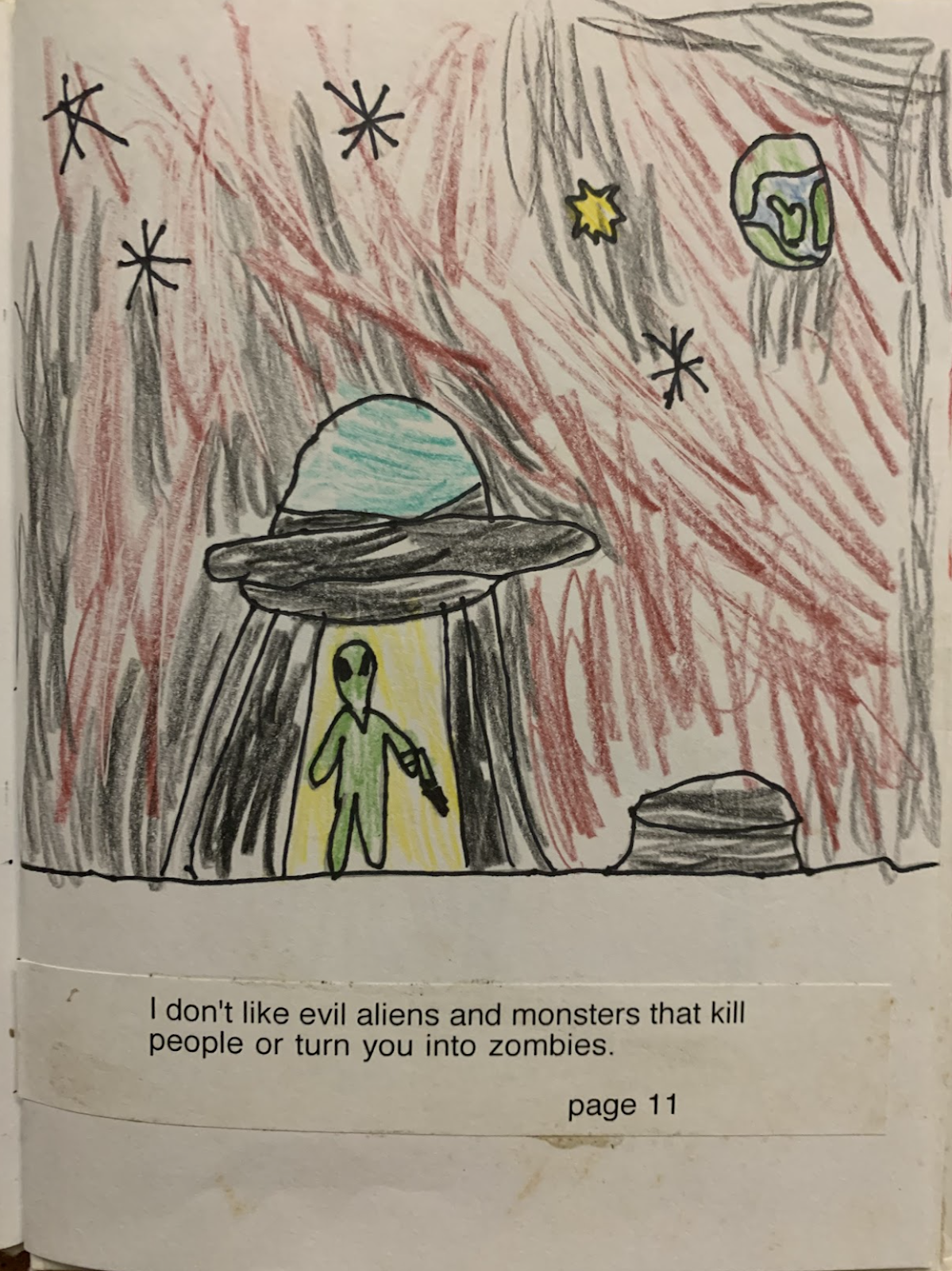There's A Zombie On Your Blog
Wait! I have some further ado! If a creator of one of these movies or TV shows somehow comes across this article and is upset with me for calling their creations zombies, I’m sorry. I know you thought of a separate name to call them, and I know that your fictional hordes are different from both the traditional zombie of Haitian folklore and the Romero-an zombie that is common pop culture. However, I like to think of the word “zombie” as a very broad category. A “zombie” doesn’t have to be dead (in fact, I think all of the zombies I talk mention today would all be classified as living). A zombie doesn’t also have to eat brains. An entity can be described as a zombie while still having a more accurate label, and/or a label that survivors use in-universe.
It’s like how humans and dolphins are mammals–however, we use the more specific terms of “human” and “dolphin” even though we could describe them as mammals (but that would get confusing). Phoners and conversationalists are both zombies, and while more specific terminology can be used, I don’t think the term “zombie” is incorrect. So, without any additional further ado, here are some unique zombies from film and television.
CW’s The Flash is a show that started out great and then became a lot less great after its third season (although honestly, I feel like season 4 Big Bad could have really worked if they changed a few things, but that’s a topic for another day). The first half of season 6 introduced us to Dr. Ramsey Rosso (aka Bloodwork), a doctor who (Doctor Who! Shout out to the Doctor Who plague mask zombies! So spooky!) is dying of HLH. The whole first half of this season is really interesting because it contrasts Barry Allen and Dr. Rosso: both men who are going to die soon, but who go about it in different ways. Dr. Rosso creates an experimental cure, uses himself as a guinea pig, and becomes a monstrous hemokinetic (someone who can control blood). However, his fatal disease is cured, and he decides to share the wealth with all of Central City and give them unwilling blood transfusions so that they too can live forever (in a zombified state, with Bloodwork as their leader). None of this is particularly unique, but the cool thing about Bloodwork is that, in order for his blood to successfully transform a human into one of his minions (dubbed “Blood Brothers”), they need adrenaline in their blood. His victims need to be afraid. And so, he purposefully leans into the horror of the situation by cutting power lines to intentionally scare people so that his citywide conquest works.
That extra layer just really made it for me, and I feel like prerequisites for infection could really make for a unique zombie movie. Maybe humans have to be in deep REM sleep for the infection to work? (Although I guess that’s pretty similar to Freddy Kreuger’s whole thing.) Maybe they need to be laughing, or bored, or mourning? (Out of all these ideas, I think mourning has the most potential—the zombies could be called “the Bereaved” [or the mourners, grievers, lossed, some cool nickname] and basically, people would be unable to mourn their loved ones, lest they join them. And maybe the movie is called Night of the Grieving Dead. Is this anything?)
Cell: Calling All the Monsters
My iPhone screen time data is very scary–at the risk of over-condemning myself, I typically spend between one and 24 hours on my phone daily. Stephen King managed to see the horror of phone usage in 2006 and wrote his book Cell, which received a movie adaptation in 2016. In this novel/film, anyone that was on their phone at a specific time hears the Pulse and becomes a murderous shell of their former self. However, the mindless killing zombies (called “phoners”) get smarter over time, gaining psychic abilities, a hive mind, and even telekinesis. This leads to some really horrifying zombifications. For example, survivors caught by phoners are presented with a choice: listen to the Pulse on my phone, or I will make you walk off of this building and die. These phoners also have a leader, a man in a Harvard sweatshirt dubbed “The Raggedy Man” who psychically haunts the dreams of non-phoners and toys with them.
(Quick joke: How can you tell if someone went to Harvard?
Having smart zombies also means having ego-driven zombies, with the Raggedy Man in particular putting more effort into his actions than any mindless, instinct-driven zombie would. When our protagonists kill a large flock of phoners, Mr. Went-to-Harvard marks our protagonists as untouchable to other phoners and even other humans because he specifically wants to be the one to kill them all. When some humans then kill a protagonist, they are then psychically forced to crucify each other for breaking one of The Raggedy Man’s commandments. At that point, becoming a phoner almost seems like an act of mercy: you either stay a human and become an unwitting pawn for the Raggedy Man, or listen to the Pulse and become a witting pawn for the Raggedy Man. And of course, this is all just a story and is not social commentary on cell phone usage. Nuh-uh.
Pontypool: The Word is Your Oyster
Zombie. Zombie. Zom-bie. Zom…bie. Zawm…bee. Zaum…bea. Great, now it doesn’t even sound like a word anymore…which might actually be a good thing. Pontypool is a movie based on the book Pontypool Changes Everything by Tony Burgess. In the small Canadian town of Pontypool, a new kind of virus seems to be spreading. And yes, I know viruses (virii?) are very common in zombie movies. However, this one isn’t transmitted from person to person via bite, but rather, from word to person. Some words in the English language have suddenly become “infected” and cause people to descend into a zombie-like state as they repeat the diseased word over and over, losing their ability to communicate. These infected people, dubbed conversationalists (which I love) then seek out and kill non-infected people, and if they fail, they themselves end up dead via massive blood vomiting. What this virus leaves you with is swarms of conversationalists, hunting down survivors as they bleed from their mouths and repeat the last thing they heard.
Language being used to spread disease is such an interesting idea, but it gets even better. You only become infected if you understand what you are saying. The physical sounds of the word (i.e. the letters “c-a-t”) aren’t creating zombies, but the words in English (“cat”) paired with the comprehension of the word (“cute little furry animal, ex: Garfield”) start the zombification process. If you manage to convince someone that the word they’ve succumbed to isn’t the thing they think it is, they’ll be fine. In the movie, someone starts to succumb to the word “kill” but is then convinced that “kiss is kill.” (Then the two protagonists kill each other, and by kill, I mean they touch at the lips) By using words interchangeably and separating words from their intended meanings, people can stay safe from the disease. Woohoo! However, the movie ends with French authorities bombing Pontypool in an attempt to stop the spread–we love a downer ending!!!!!!!
Frankly, this movie deserves its own essay: our protagonist is a radio host who specifically aims to create polarizing content because tuning in to something because you dislike it is still tuning in. As someone who creates controversy for a living, his usage of buzzwords to create angry radio listeners isn’t all that different from certain words creating angry (homicidal) zombies/conversationalists. Overall, Pontypool is one of the most interesting zombie movies out there, and I definitely recommend… recommend… recommend. recommend… recommend! recommend!
Conclusion
Zombies are spooky! While you can never go wrong with the classic bite-driven infection, these three pieces of media (well, five, because two of them are based on novels) show that shaking up the formula every once in a while can be good! And of course, it leads to some really interesting commentary. Are we all just zombified phone addicts (evidence: BeReal), or are we zombified word-spewing machines (evidence: my over-usage of the word “slay”)? Regardless, I think lil’ Odin was right to list zombies as something he didn’t like.




Comments
Post a Comment